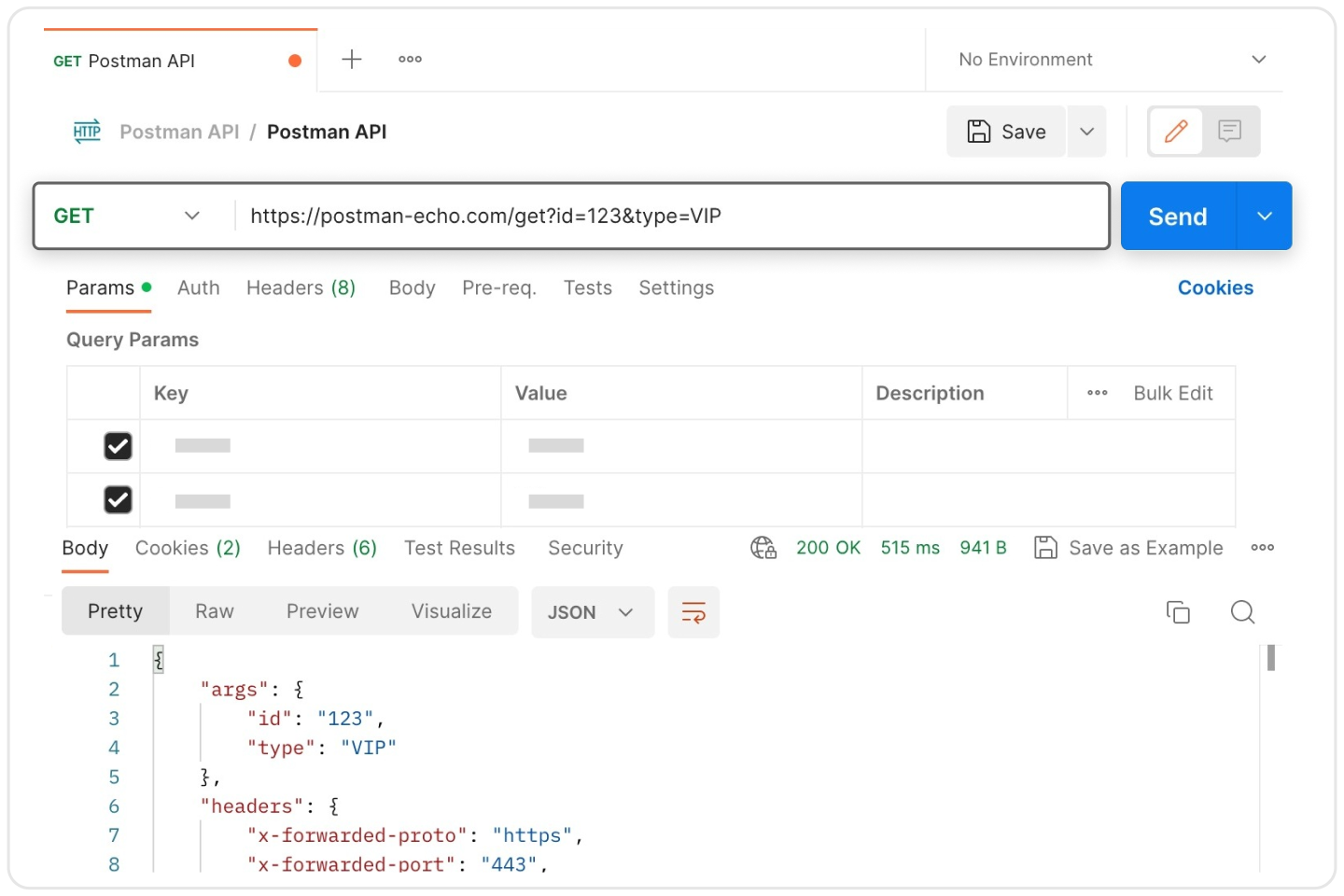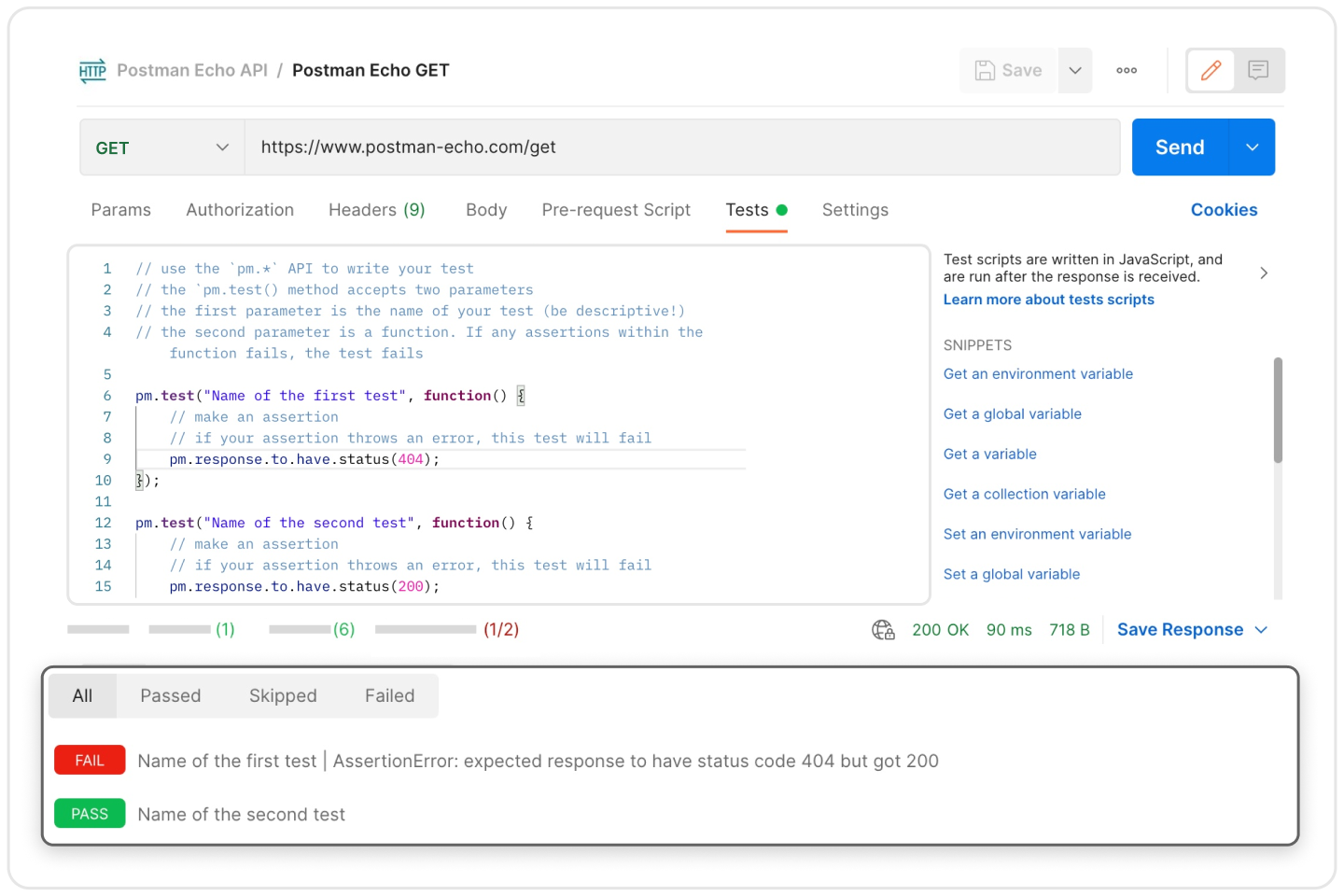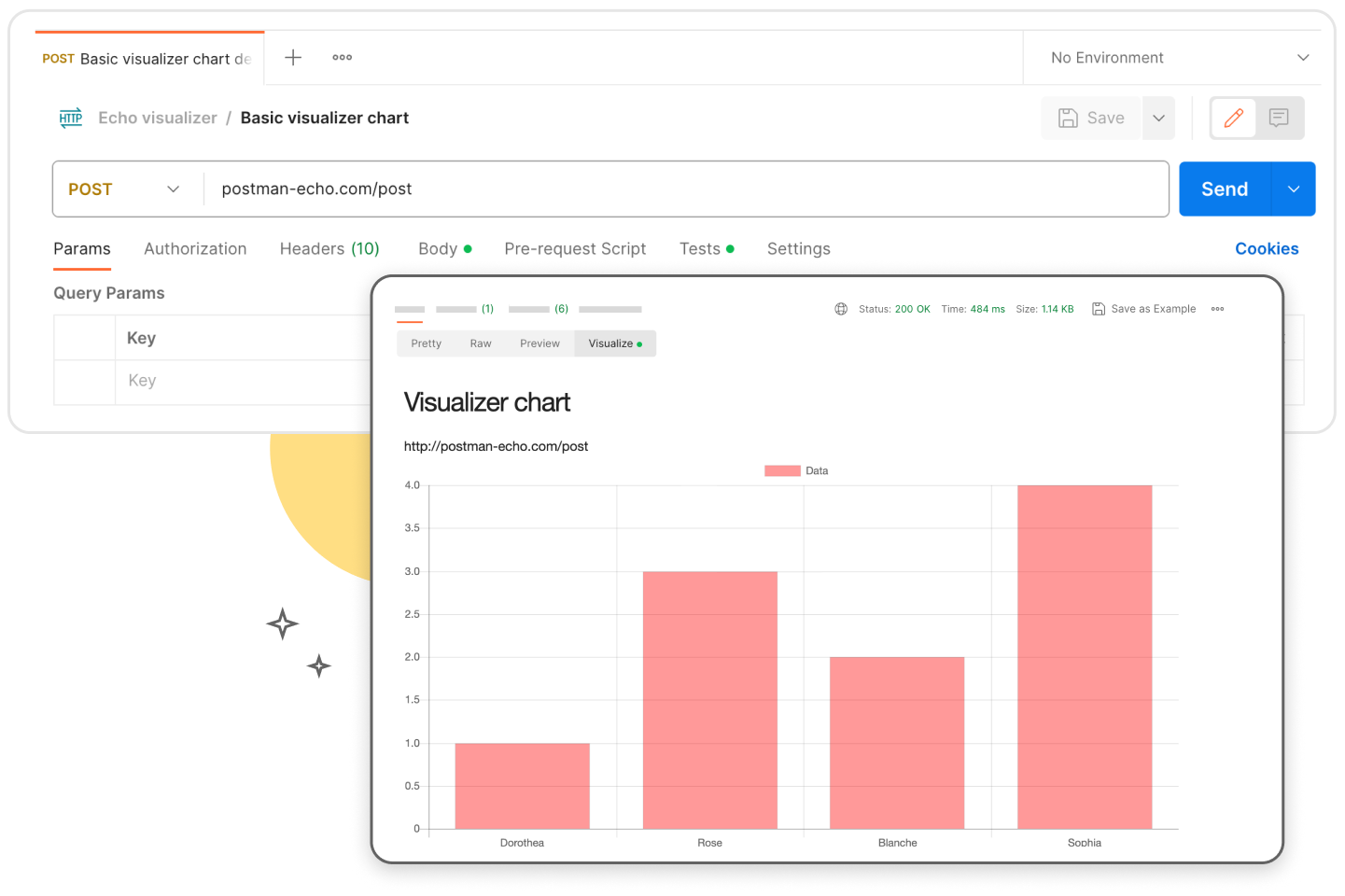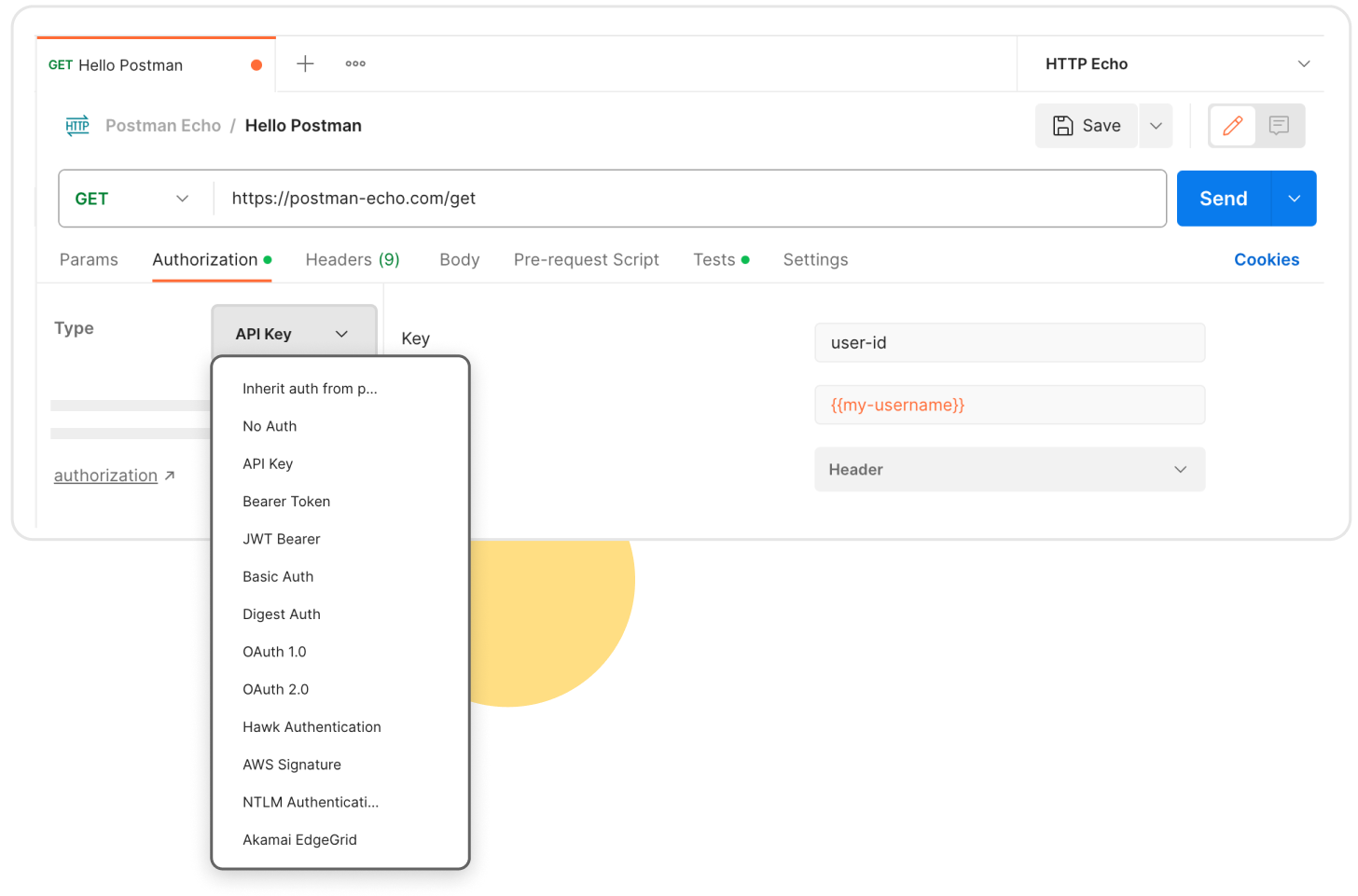REST client
What is a REST client?
REST (Representational State Transfer) is the most popular architectural style for building APIs. In a RESTful architecture, resources can be accessed or manipulated with standard HTTP methods, such as GET, POST, PUT, and DELETE. A REST client removes some of the complexity of sending requests and parsing responses, which makes it easier for developers to explore, test, and debug REST APIs.
How does the Postman REST client work?
Postman's REST client is the industry standard tool for working with REST APIs. With the Postman REST client, you can:

Define, send, and save complex requests

Create a robust API test suite

Inspect and visualize responses

Manage authentication workflows
What can you do with a REST client?
Traditional approaches to calling a REST API require the API user to know a programming language, understand the API's protocol, and interpret the response. A REST client streamlines this process, enabling developers of all levels to explore, test, and debug REST APIs from an intuitive user interface. This makes it easier for teams to integrate public APIs into their applications—and allows them to easily spot and fix issues in their own API's code.
What other protocols does the Postman API client support?
Postman is more than just an API client—it's an API platform that simplifies each step of the API lifecycle and enables teams around the world to collaborate more efficiently. In addition to REST, the Postman API client also supports GraphQL, SOAP, WebSocket, and gRPC, so you can get started quickly with the protocol and architectural style that make sense for your project.
The Postman API client is tightly integrated with the rest of the platform, which allows you to leverage Postman's full feature set—including workspaces, API documentation, mock servers, and monitors—regardless of your API's stack. Postman also offers advanced features, such as role-based access control, API governance, and API security, for Professional and Enterprise teams.
June 3 & 4, 2025 in Los Angeles, CA
Step into the future of APIs and AI at POST/CON 25. Join developers, architects, and tech leaders to build smarter, faster, and more secure APIs in the age of generative AI.
